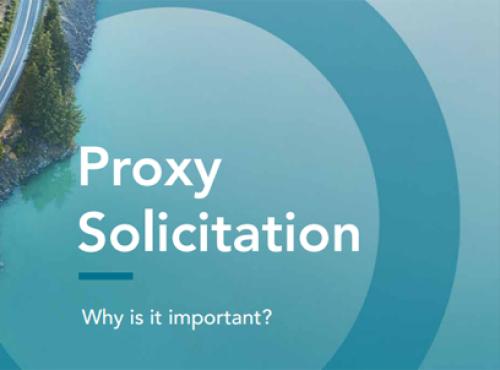Market research coverage is a crucial element for companies looking to attract investors. But a steep decline in sell-side market research from brokerages over the past several years has made the lack of analyst coverage of small-cap and micro-cap companies even worse.
Market research has the effect of increasing awareness of the issuer company, increasing reach to new investors and providing better information for investors to make decisions. According to Oxera, greater research coverage also improves market liquidity and lowers the cost of capital for companies. This is supported by studies that suggest coverage positively affects a company’s prospects and valuation.
Filling the research gap
In the absence of coverage, how are companies filling the research gap? Some are turning to paid research to ensure investors have the necessary information available to form opinions on an investment. With brokerages slashing research budgets, issuer-paid research has become a viable option for firms suffering from a lack of coverage.
Paid analyst research plays an important role in helping expand awareness and in facilitating the understanding of a company’s valuation. Issuer-paid research allows small-cap and micro-cap companies to have key financial metrics and projections made available to the market that otherwise would not be readily available. For smaller, high-growth companies, this provides the investment community with insight on the company’s path to profitability and when it may reach breakeven.
Paid analyst reports help attract retail investment advisers, individual investors and institutional investors, and may even spur additional analyst coverage from brokerages. In addition to the traditional benefits of coverage, company-paid research is publicly available to anyone who asks for it, unlike analyst research from a brokerage, which is typically restricted to its own investment network and existing institutional relationships. Independent issuer-paid research firms also have their own network of investors, which helps disseminate information to market participants that otherwise may not have heard about the company.
Is issuer-paid research legitimate?
The short answer is yes. Picking the right research firm is, however, crucial to the effectiveness of your paid-research efforts. When a company pays for research, it is engaging with an independent third-party research firm to perform research on the company and its market, provide independent analysis and assessment, compile this into a report and publish it publicly so that is it widely available for distribution to the market.
If yours is a company seeking to fill the coverage gap with paid research, there are three important factors to consider in choosing a research firm to provide reports that will be trusted by investors:
- Experience – Make sure the analysts at any research firm you are considering have experience or capabilities to evaluate companies in your industry, especially if that industry is highly technical. You should be confident that an analyst truly understands your company and will provide an accurate and high-quality report. Sophisticated investors will review the credentials and quality of the firm providing research as well as the analyst publishing the report, so picking the right analysts to work with is crucial to the success of your paid research efforts
- Bias – Do all of the research firm’s paid reports issue glowing ‘strong buy’ recommendations? Make sure any research firm you’re considering isn’t afraid to publish neutral reports or reports with sell recommendations. Having negative reports in its portfolio of publications will hold much more weight with experienced investors. Also, you can avoid bias by ensuring the research firm only accepts payment upfront prior to its research initiation and final recommendation, and does not accept stock or options as compensation
- Accuracy – Before you hire a research firm, review the accuracy of a few past reports. You want to be working with analysts who have shown they have competently evaluated the company’s prospects, key business drivers and variables that could impact the business, the market opportunity and management’s ability to execute. No one is going to get the outcome right every time, particularly as market forces and business dynamics change, but it’s important that the analyst understood and adequately assessed the factors that could lead to different scenarios.
The cost-benefit of issuer-paid research
Issuer-paid research is not cheap for smaller firms that don’t have the budgets of large-cap companies and are directing much of their financial resources to growing the business. Coverage can cost around $45,000 per year. But this has to be looked at from the perspective of the return.
If issuer-paid coverage has the effect of raising awareness with enough members of the investment community so that ultimately a sustained higher stock price is achieved than the issuer would otherwise have without the coverage, that can be a significant return for a company.
For example, let’s consider a micro-cap company with 50 mn shares outstanding, a stock price of $1 and therefore a market capitalization of $50 mn. After an issuer-paid research report is published, if the stock price begins to rise and settles at $1.30 with no other material information having been released, that’s a 30 percent rise against dilution and an extra $15 mn in market capitalization.
A higher stock price in public markets can increase the price point of future financing rounds, thereby reducing dilution, and a higher stock price can be used as currency for acquisitions, thus making acquisitions cheaper. An issuer has to ask itself whether paying $45,000 per year for coverage is worth that benefit in the context of executing on the short to medium-term strategic goals of the company.
Final thought
For small-cap and micro-cap companies suffering from a lack of coverage by traditional brokerage research, issuer-paid research provides the opportunity to disseminate information into the market, drive awareness and attract investors. It’s a proven and viable option that can have positive effects on the company’s relations with the investment community and on its market valuation.
Todd Skene is director of capital markets at irlabs










